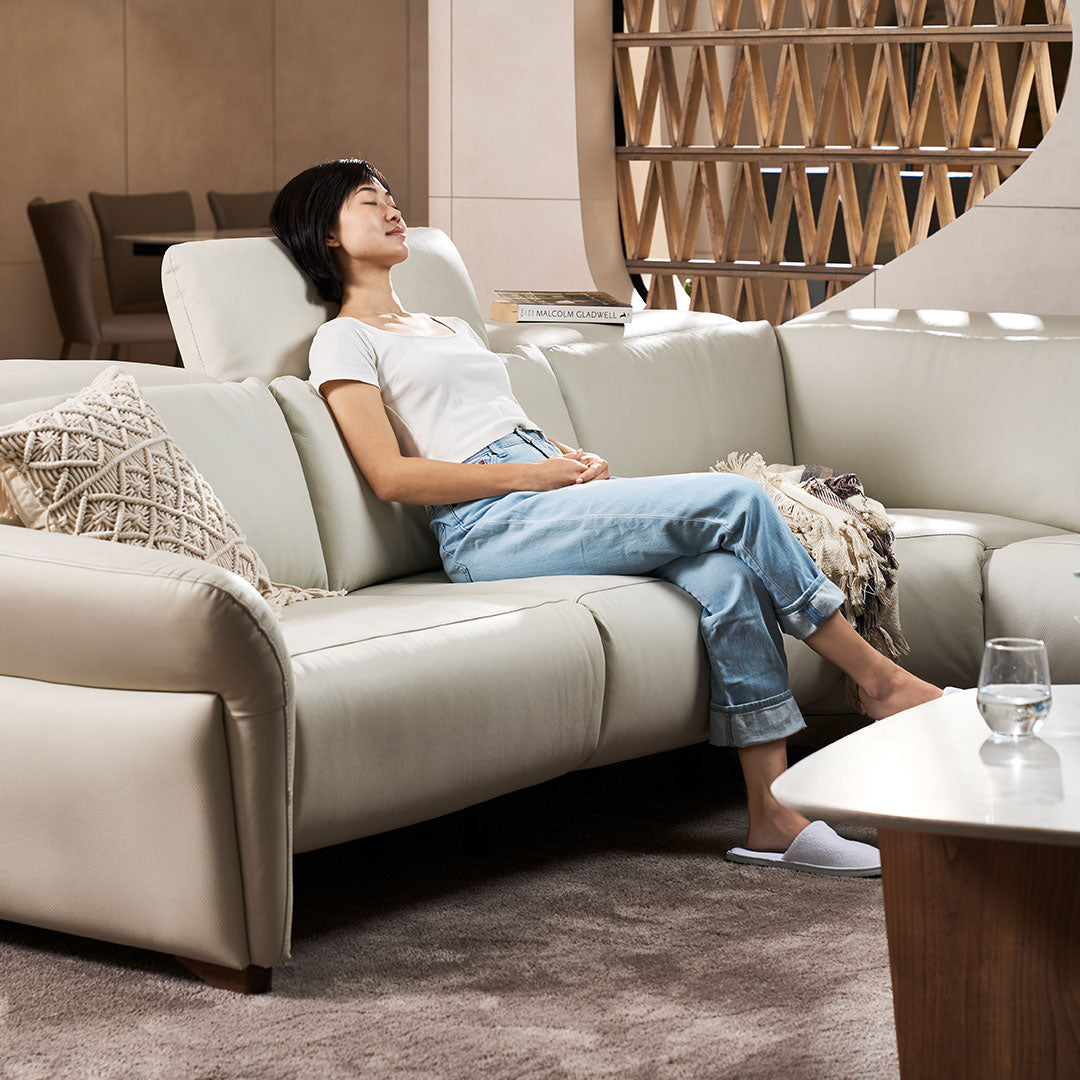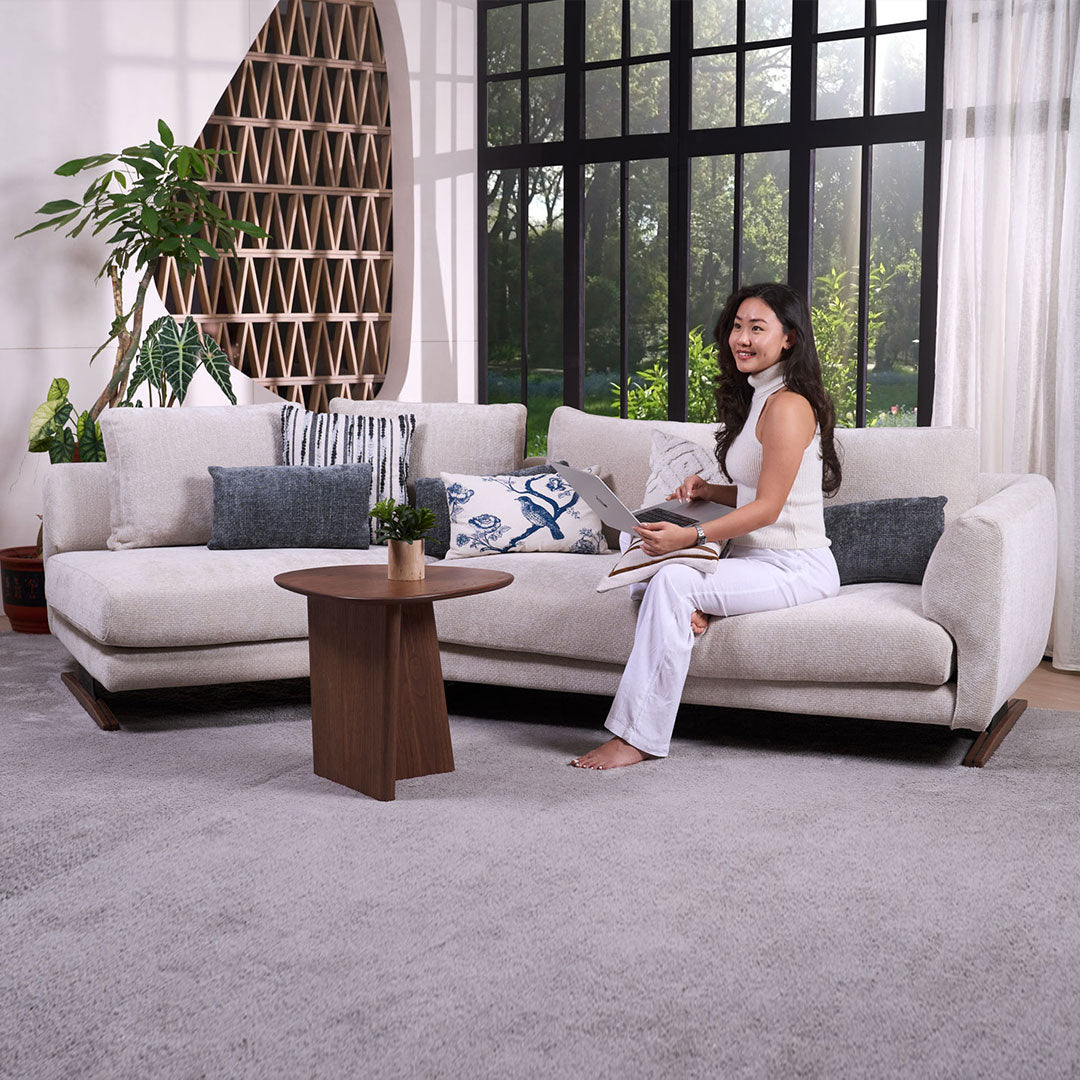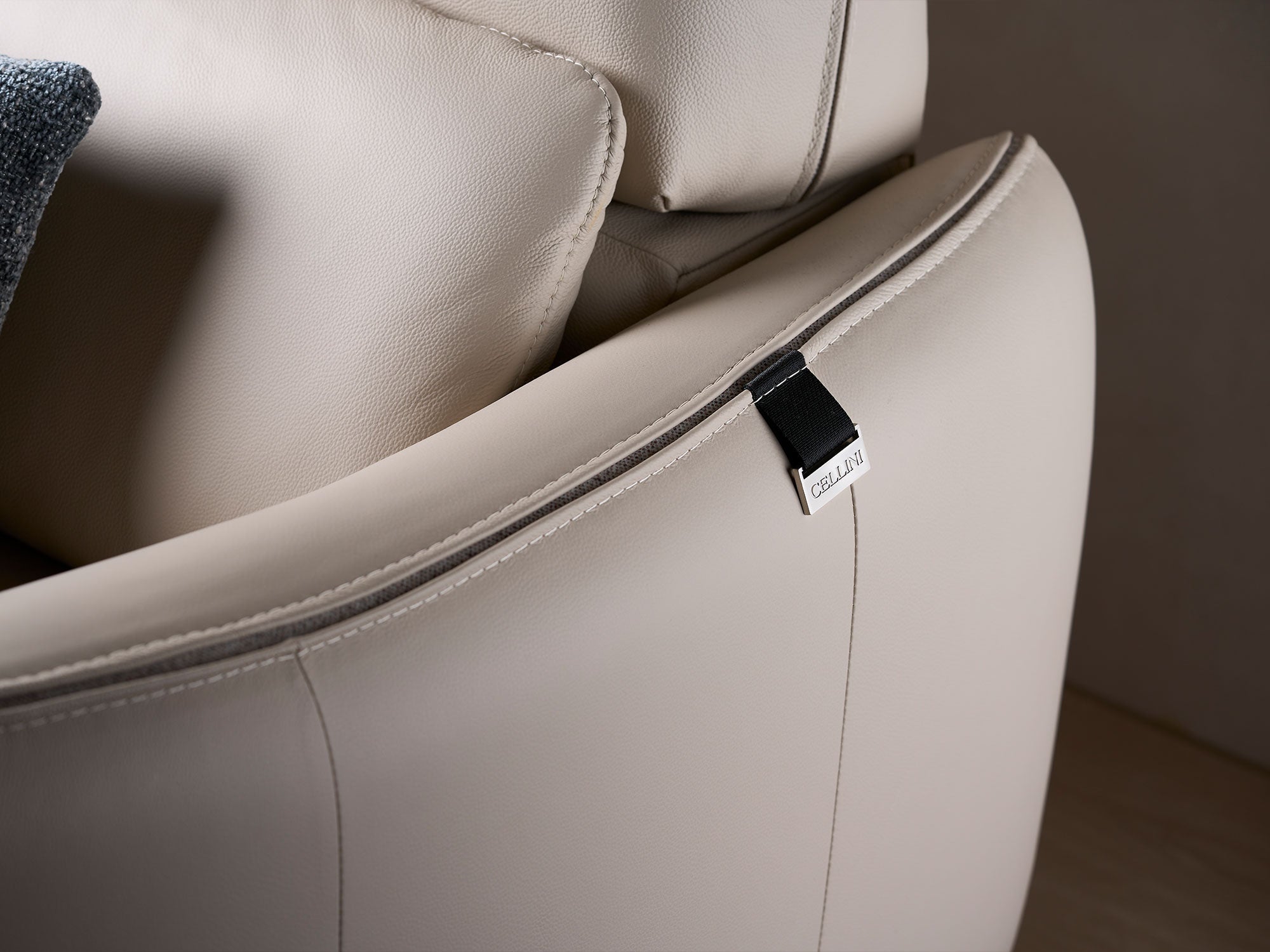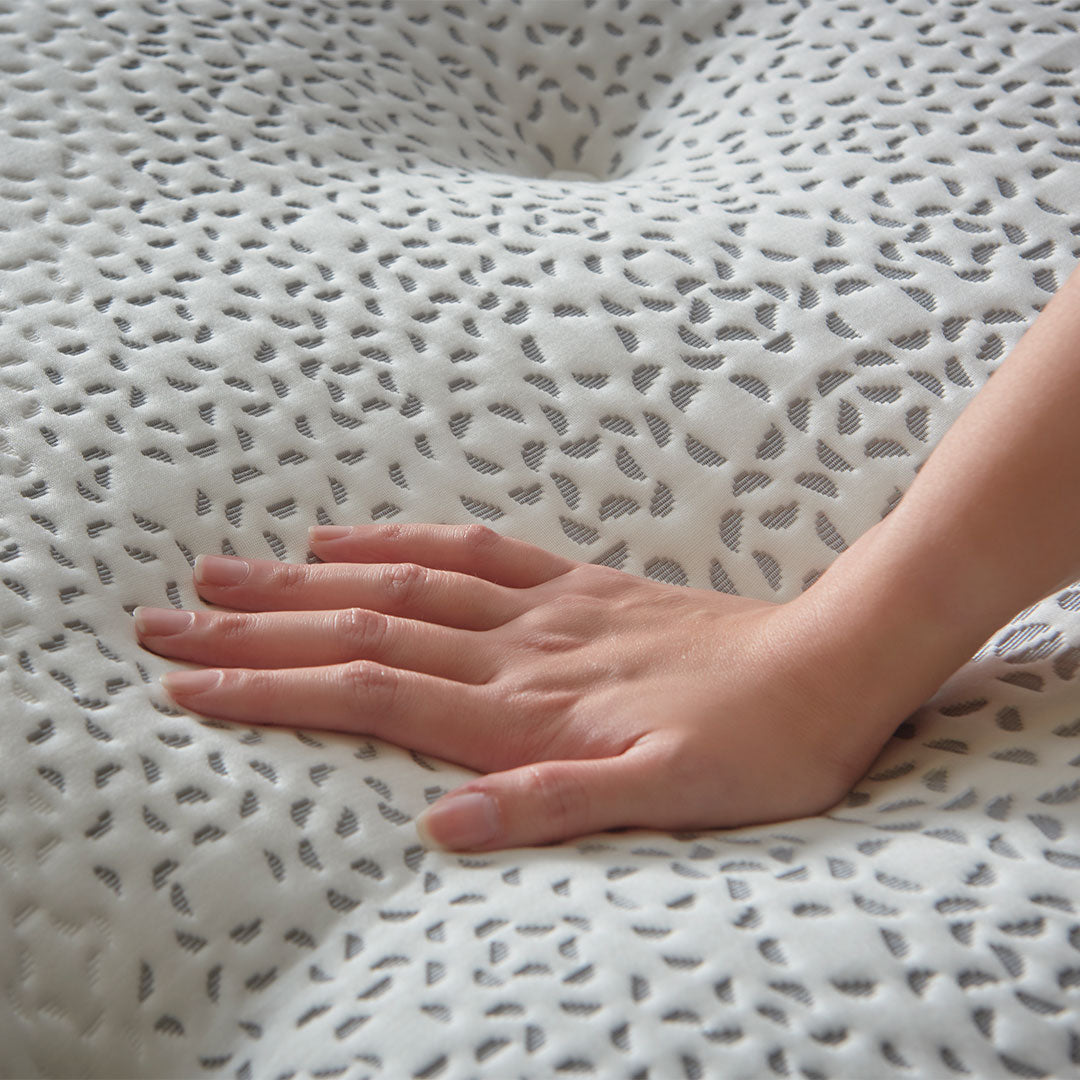Introduction
Since we spend nearly a third of our lives in bed, choosing a good mattress serves as an investment in our well-being. As the foundation of your comfort, health, and energy, the right mattress supports your body, improves sleep quality, and helps you feel refreshed each day.
There are several elements to consider when shopping for your desired mattress, including comfort, support, durability, and breathability. Apart from how a mattress feels in a furniture shop in Singapore, you’ll also want to look at the type of spring system inside, as this determines how your mattress performs over the years. Of all the innerspring mattress types available, Bonnell spring mattresses and pocket spring mattresses are two of the most popular choices today.
This article explores Bonnell spring vs pocket spring mattresses, highlighting their key differences so you can choose the one that best suits your sleep needs.

Key Takeaways:
-
What Defines a Pocket Spring Mattress?
A pocket spring mattress, also called an individually wrapped coil mattress, is a modern take on the traditional spring system. In the Bonnell spring vs pocket spring mattress debate, pocket springs are often highlighted for their adaptive comfort, as each coil responds independently to the sleeper’s body. -
How is a Pocket Spring Mattress Structured and Designed?
Unlike interconnected Bonnell coils, each spring in a pocket mattress is encased in its own fabric pocket. The structure prevents wear, reduces noise, and allows the coils to move separately. This independence is what gives pocket springs superior motion isolation and contouring support, when it comes to understanding Bonnell spring vs pocket spring mattresses. -
Who Should Consider a Pocket Spring Mattress?
A pocket spring mattress is ideal for light sleepers who are easily disturbed, as its independent coils minimise motion transfer. It’s also a great choice for couples or families sharing a bed, since one person’s movements won’t affect the other. People with chronic back, hip, or shoulder pain benefit from its targeted support, which adapts to pressure points and helps maintain spinal alignment. -
What Defines a Bonnell Spring Mattress?
A Bonnell spring mattress is defined by its hourglass-shaped coils, which are wider at the top and bottom and narrower in the middle. These coils are interconnected with metal wires, creating a unified structure that delivers firm, even support across the bed. This design gives the mattress a traditional, bouncy feel while also promoting airflow through the open coil system. -
How is a Bonnell Spring Mattress Structured and Designed?
A Bonnell spring mattress is built with hourglass-shaped coils that are wider at the top and bottom but narrower in the middle. This design provides stability while allowing controlled compression, helping to distribute body weight evenly across the surface. The coils are all interconnected by metal wires, which means the mattress responds as a single unit, creating a firm and uniform feel. -
Who Should Consider a Bonnell Spring Mattress?
A Bonnell spring mattress is best for back or stomach sleepers who prefer firm support, as well as budget-conscious buyers who need a reliable option for everyday use, guest rooms, or rental properties. When deciding between the Bonnell spring vs the pocket spring mattress, the former is often the go-to for practicality and affordability. -
What’s the Difference Between a Bonnell Spring vs a pocket spring mattress?
The key differences between a Bonnell Spring vs a pocket spring mattress lie in comfort, motion isolation, price, and durability. Bonnell spring mattresses use interconnected hourglass coils to create a firm, traditional feel with even support. Pocket spring mattresses, on the other hand, feature individually wrapped coils that adapt to body curves, offering superior comfort, pressure relief, and motion isolation.
Overview of a Bonnell Spring Mattress
What Is a Bonnell Spring Mattress?
Before diving into the comparison between Bonnell spring vs pocket spring mattresses, it’s worth mentioning that the Bonnell spring mattress is one of the oldest and most common spring systems. Built with hourglass-shaped coils, it helps provide a firm and stable sleeping surface.
What Are Its Structure and Design Insights?
The defining feature of a Bonnell spring mattress is its hourglass-shaped coils. Wider at the top and bottom yet narrower in the middle, these coils provide stability while allowing controlled compression. This design helps distribute body weight evenly, striking a perfect balance of firmness and comfort without feeling overly rigid.
All the coils are interconnected by metal wires, which means the mattress responds as a single unit. This individual coil support creates a firm and uniform sleeping surface that delivers consistent support across the bed. However, the trade-off is that motion can easily transfer from one side to the other. This means a restless sleeper may disturb their partner.
To improve durability, Bonnell spring mattresses often come with steel edge support. Reinforced edges with thicker wires or brackets prevent sagging and extend the mattress’s lifespan. That said, users can sit or sleep comfortably near the perimeter without losing stability.
Since the coil system alone would feel too firm, manufacturers add comfort layers such as foam, fibre, or quilted padding on top. Thanks to these layers that offer softness, pressure point relief, and extra cushioning, Bonnell spring mattresses are supportive and comfortable for everyday use. The thickness and quality of these comfort layers also play a part in determining the overall feel of the mattress.
What are the Pros?
Although it is one of the oldest mattress designs, a Bonnell spring mattress remains people’s favourite today, thanks to its practical benefits. When comparing Bonnell spring vs pocket spring mattresses, these strengths highlight why the Bonnell system continues to hold its place in the market.
1. Strong and Even Support
Bonnell spring mattresses provide a firm and uniform sleeping surface, making them ideal for people who prefer less sinkage. The interconnected coil system distributes body weight evenly, reducing the risk of pressure points.
2. Better Air Circulation
Thanks to the open coil design, air can flow freely between the springs. This natural ventilation helps regulate temperature, offering a cooler and more breathable sleep surface. This can be a bonus in Singapore’s humid climate.
3. Supportive Under Pressure
The sturdy coil structure of a Bonnell spring mattress forms a solid and stable foundation. This allows it to withstand different body weights without sagging or losing its shape easily. Users can benefit from its resilience under pressure and consistent comfort, even with regular, long-term use.

4. Durability
With reinforced steel edges and a robust coil network, Bonnell spring mattresses are built to last. Their straightforward design has fewer components, making them less prone to mechanical issues over time. With proper care, they can maintain their supportive feel for years. Looking into the differences of Bonnell spring vs pocket spring mattresses, this durability is often seen as one of Bonnell’s strongest advantages.
What Are the Cons?
Now that we have explored the benefits of a Bonnell spring mattress, the next thing to consider is its drawbacks. While this mattress type is affordable and durable, it may not suit everyone’s sleep needs.
1. Poor Motion Isolation
As all the coils of this mattress are interconnected, so movement on one side of the bed is easily transferred to the other. This may not be the best mattress for couples, especially for light sleepers or those who tend to toss and turn frequently.
2. Limited Body Contouring
Unlike memory foam or pocket springs, Bonnell springs do not conform closely to the body’s natural curves. As the pressure is distributed more generally, some sleepers may not receive personalised comfort.
3. Pressure Point Discomfort
The firm surface of a Bonnell spring mattress can feel uncomfortable around sensitive areas such as the shoulders and hips, especially for side sleepers. Without enough cushioning, this may lead to pressure build-up over time.
4. Noise Over Time
As the mattress ages, the springs can start to creak or squeak under movement. While not always a dealbreaker, this may become distracting and reduce the overall sleep experience.
Who Should Consider a Bonnell Spring Mattress?
Despite its drawbacks, a Bonnell spring mattress remains a smart option for certain sleepers. Here’s who might benefit most:
1. Budget-Conscious Buyers
A Bonnell spring mattress is an affordable option. Its simple yet sturdy design is ideal for those who want a reliable mattress without spending too much, whether for everyday use, guest rooms, or short-term setups.
2. Back or Stomach Sleepers
Its firm surface provides the stability needed to support spinal alignment, especially for those who prefer sleeping flat on their back or stomach. In these positions, a mattress that is too soft may cause the midsection to sink, leading to an unnatural curve in the spine.
3. Guest Rooms or Short-Term Use
Affordable and dependable, Bonnell spring mattresses are a practical choice for occasional use setups like guest rooms or rental properties. In general, these environments don’t require a high-end mattress, but still need one that can deliver reliable comfort and last through varied usage.
4. Those in Warmer Climates
The open coil structure of Bonnell spring mattresses promotes excellent air circulation throughout the mattress. Unlike dense foam models that can trap heat, the gaps between the interconnected coils allow air to flow freely. This natural ventilation helps regulate body temperature, making the mattress well-suited for warmer climates like Singapore.
Overview of a Pocket Spring Mattress

What Is a Pocket Spring Mattress?
A pocket spring mattress is also known as an individually wrapped coil mattress. It represents a more modern evolution of the traditional spring system. This mattress’s design allows the springs to move independently, delivering better comfort, customised support, and improved motion isolation. This structure makes a key advantage when comparing Bonnell spring vs pocket spring mattresses.
What Are Its Structure and Design Insights?
A pocket spring mattress stands out for its unique construction. Each spring is individually wrapped in its own fabric pocket, often made of cotton or synthetic materials. This separation keeps the springs from rubbing against each other, reducing wear and tear while also improving the mattress’s overall durability.
As the coils move independently, the mattress can adjust more precisely to different pressure points on the body. This means that movement on one side of the bed does not affect the other. If you are sharing a bed with your partner or a light sleeper who looks to shop for a reliable mattress at a furniture store in Singapore, a pocket spring mattress is the go-to choice.

Like Bonnell spring mattresses, pocket spring models also feature comfort layers made from materials, including foam, latex, or fibre. These layers are added on top of the coil system to provide cushioning and softness, resulting in a sleep surface that balances comfort with reliable support.
Some premium pocket spring mattresses go a step further with zoned support systems. These are designed with coils of varying tension in different areas of the mattress. For instance, firmer springs are placed in the lumbar area to support the spine, while softer springs are positioned near the shoulders to provide better pressure relief. This targeted support promotes better spinal alignment and overall comfort.
What Are the Pros?
In this section, we explore how a pocket spring mattress has become one of the preferred choices in the Bonnell spring vs pocket spring mattress comparison. Designed with individually wrapped coils that move independently, pocket spring mattresses bring a range of benefits that cater to different sleep preferences.
1. Excellent Motion Isolation
A standout feature of a pocket spring mattress is its ability to absorb movement. Due to its standalone coils, any motion on one side of the bed stays contained and does not ripple across the surface. Looking for an undisturbed good night’s sleep? Look no further than a pocket spring mattress.
2. Customised, Adaptive Support
Each pocket spring works independently to respond to your body’s unique pressure points. This means the mattress can contour more naturally, supporting proper spinal alignment. Thanks to this feature, sleepers may experience reduced strain on sensitive areas like the shoulders, hips, and lower back.
3. Versatile to Different Sleep Positions
From back sleepers to side or stomach sleepers, a pocket spring mattress adjusts to each sleep position. Its responsive design supports your body by providing the right balance of comfort and support. This is a major feature often emphasised when comparing Bonnell spring vs pocket spring mattresses.
4. Cooler Sleep Environment
Like Bonnell systems, pocket spring mattresses also use coils that allow air to circulate freely. This improved airflow helps regulate temperature and prevents overheating. So, when paired with the right mattress and bed frame, sleepers can enjoy a cooler and more refreshing sleep throughout the night.
What are the Cons?
While pocket spring mattresses come with many advantages, it’s equally important to consider their drawbacks. In the Bonnell spring vs pocket spring mattress debate, these factors often explain why some buyers may still lean toward the more traditional Bonnell system.
1. Higher Cost
The sophisticated design of individually wrapped coils and the use of premium materials mean pocket spring mattresses are generally more expensive than Bonnell spring types. For budget-conscious buyers, this higher upfront cost may be a deciding factor.
2. Durability Depends on Materials
Although pocket spring mattresses can last for years, their longevity depends heavily on the quality of the fabric and coil materials used. Lower-quality versions may sag or lose support unevenly over time, especially if exposed to heavy use.
3. Motion Isolation for Active Sleepers
While excellent for minimising partner disturbance, the close body contouring of pocket springs can sometimes feel restrictive. Active sleepers who like to move around freely at night may find themselves feeling less mobile, particularly if the mattress is topped with dense foam layers.
Who Should Consider a Pocket Spring Mattress?
Even with these limitations, pocket spring mattresses are ideal for sleepers who value comfort and tailored support. The groups who benefit most include:
1. Light Sleepers Sensitive to Movement
Pocket spring mattresses are excellent for those who wake easily at night. As each coil moves independently, the mattress absorbs motion locally rather than spreading it across the bed. This means light sleepers are far less likely to be disturbed.
2. Couples or Families Sharing a Bed
For people who share their mattress, motion isolation is one of the biggest advantages. With a pocket spring design, each side of the bed responds separately to movement. This allows multiple people to sleep soundly without interruptions.
3. Individuals with Chronic Pain
Those struggling with back, hip, or shoulder pain often need more tailored support to ease discomfort. Pocket springs respond to the body’s pressure points more precisely, helping to maintain spinal alignment while cushioning sensitive areas. This adaptive support can reduce stiffness in the morning and improve overall sleep quality for those with ongoing pain concerns.
4. Side Sleepers
Side sleeping often places extra pressure on the shoulders and hips. Pocket spring mattresses contour naturally around these curves, reducing the risk of numbness or discomfort in these areas. Through even distribution of body weight, this mattress helps side sleepers to maintain good posture and enjoy a more restful night.
5. Buyers Seeking Long-Term Comfort
Though typically more expensive upfront, pocket spring mattresses are built with durability in mind. They retain their supportive feel longer than many traditional spring systems, benefitting those who want a mattress that will deliver consistent comfort for years.
6. Those Preferring a Softer Feel
Unlike the uniformly firm surface of Bonnell spring mattresses, pocket spring models tend to offer a softer, more adaptive feel. Many are designed with a medium or soft-to-medium firmness, making them perfect for sleepers who prefer a little sink-in comfort while still enjoying overall support.
Bonnell Spring vs Pocket Spring Mattresses: What’s the Difference?
When choosing a new mattress, one of the biggest decisions is determining between Bonnell spring vs pocket spring mattresses. This section helps you understand these mattress differences, so that you can decide which best matches your sleep needs.

1. Support and Comfort
Spring mattresses use coils to provide structure and support. A Bonnell spring mattress offers a firmer, more traditional feel with even support across the surface. It is well-suited for those who prefer sleeping on their back or stomach.
On the other hand, a pocket spring mattress delivers more body-contouring support. Given the independent movement of each spring, this mattress adapts better to the sleeper’s curves. It is recommended for side sleepers or anyone dealing with pressure-point discomfort in the shoulders, hips, or lower back. This difference highlights the classic firm vs plush mattress debate, with each style catering to different comfort needs.
2. Motion Isolation
One of the biggest differences between spring types lies in how they handle motion. With Bonnell springs, the interconnected coil system means that movement on one side of the bed is easily felt on the other, which can be disruptive for couples. On the contrary, pocket springs excel at motion isolation. Each coil is encased in fabric and works independently, so restless partners or pets are less likely to disturb your sleep.
3. Price and Value
When it comes to comparing Bonnell spring vs pocket spring mattresses in terms of budget, the trade-off is clear. Bonnell spring mattresses are generally more affordable and offer good value for those seeking firm support without a high price tag. They are often chosen for guest rooms, children’s beds, or rental properties. Pocket spring mattresses, however, tend to come at a higher price point due to their more complex design and higher material costs.
4. Durability
Durability depends heavily on build quality. Bonnell spring mattresses are known for their long-lasting firmness and robust structural integrity. They can retain their supportive feel for many years with proper care.
Pocket spring mattresses, while generally durable, may wear unevenly or sag if made from lower-quality materials. To maximise longevity, invest in a reputable brand with well-constructed springs and quality comfort layers.

Refer to the table below for a summary of Bonnell spring vs pocket spring mattresses:

Bonnell Spring vs Pocket Spring Mattress: What to Consider When Choosing
When deciding whether a Bonnell spring or pocket spring mattress suits you best, it often comes down to personal needs and lifestyle. Let’s look into the following factors to find the mattress that best matches your support and sleep requirements:

1. Sleeping Position
Your preferred sleeping position can be a determinant in selecting the right mattress. Back or stomach sleepers may find the firmer support of a Bonnell spring mattress more comfortable, as it helps maintain proper spinal alignment without excessive sinking. Meanwhile, side sleepers often benefit from the adaptive contouring of pocket springs. This structure relieves pressure on the shoulders and hips for a more restful night.

2. Budget
Cost is another key factor. Bonnell spring mattresses are typically more affordable. It is a great option for guest rooms, children’s beds, or short-term use where budget-friendliness is a priority. Pocket spring mattresses, while more expensive upfront, are generally considered a better long-term investment. Users benefit from their enhanced comfort, targeted support, and motion isolation, which contribute to better sleep quality.
3. Personal Preference
At the end of the day, comfort is subjective and depends on what you enjoy most in a bed. Preferring a firm, bouncy, and traditional feel? A Bonnell mattress is likely to suit you best. However, if you enjoy a softer, adaptive, and motion-isolating experience, then a pocket spring mattress will be the better choice. For those who want even more flexibility, pairing either option with an adjustable mattress base can improve comfort by allowing you to customise sleeping positions to your lifestyle and health needs.
Frequently Asked Questions
1. Are Bonnell spring mattresses outdated?
Not necessarily. While they are considered a more traditional design, Bonnell spring mattresses are still popular for their affordability and firm support, especially in budget hotels and guest rooms.
2. Which type of spring mattress is better for back pain?
Pocket spring mattresses are generally better for back pain. This is because they offer targeted support and adapt to your body’s contours, reducing pressure on the spine and joints.
3. Are pocket spring mattresses heavier than Bonnell spring ones?
Yes, pocket spring mattresses are generally heavier due to the higher coil count and individual encasements. This comparison between Bonnell spring vs pocket spring mattresses highlights the better quality and support of the former.
Conclusion
Choosing between a Bonnell spring vs a pocket spring mattress ultimately comes down to your individual needs, comfort preferences, and budget. Looking for a firm, traditional, and budget-friendly choice? The Bonnell spring mattress delivers reliable support. In contrast, a pocket spring mattress offers a softer, more adaptive feel with excellent motion isolation. It is a worthwhile investment for long-term comfort.
Apart from firmness and support, modern sleepers should also consider wellness features such as breathability and hypoallergenic protection. An anti-allergy mattress can make a difference for those sensitive to dust or allergens, promoting both better comfort and healthier sleep.
At Cellini, every furniture piece is designed with you in mind. We blend exquisite craftsmanship, natural materials, and mindful design that prioritise posture, wellness, and everyday living. Let us bridge the gap between quality and lifestyle, bringing life and comfort to your living space.
Shop with us today to discover the right mattress that delivers lasting comfort, support, and wellness in every detail.







